347. Early in my investigations I noticed there was no sign of henua in line Gb3, which seems to agree with the glyph pictures late in DECEMBER, when the Sun was far down in Aquarius instead of shining on Mother Earth up in the northern hemisphere.
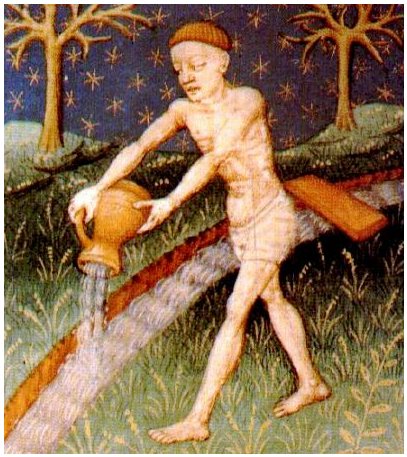
| JUNE 27 (178 = 98 + 80) |
179 |
CHRISTMAS EVE (358) |
69 |
MARCH 4 (*348 = *278 + 70) |
220 |
| DEC 26 (360 = 178 + 182) |
ST JOHN'S DAY (175 = 358 - 183) |
SEPT 2 (*165 = 175 - 80 + 70) |
 |
 |
 |
|
Ga4-15 (98 = 178 - 80) |
Gb2-23 (278 = 358 - 80 = 229 + 7 * 7) |
Gb4-28 (348 = 428 - 80 = 12 * 29) |
| η CARINAE (*162 = *98 + *64) |
SITULA (*342 = *162 + *180) |
ζ ARIETIS (*47 = *229 - *182) |
| MATAR (*344 = 360 - 80 + *64) |
p CARINAE (*159 = *342 - *183) |
ζ LUPI (*229 = *159 + 70) |
| 181 + 70 = 251 = 471 - 220 |
| SEPT 2 (245) + 10 * 29½ = 540 (= 360 * 1½ = 2 * 270) = 365 + 175 (ST JOHN'S DAY) |
The flow from Situla was swallowed by a fish:
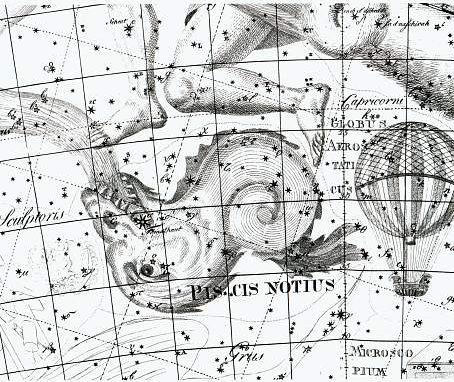
.jpg)
But then the stream would reappear again at the Phoenix bird who heated it up - resulting in the rising flow of Eridanus, moving towards Cetus and spring.
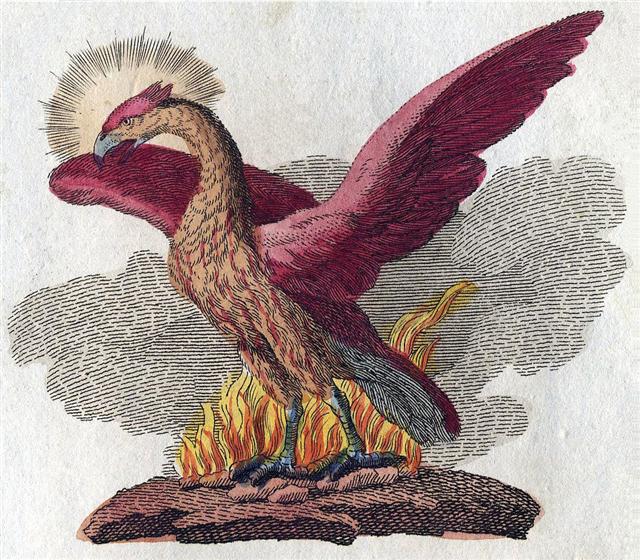
... Before I had time to take notes the information was gone from my TV screen. But what remains in my memory must be retold. There was somewhere among the 'Paradise Islands' - which ought to have been located close to New Guinea where the birds of paradise are thriving - a species which I think might have been the origin of the mythical Phoenix. It laid a single great white egg and after some time (27 days if I remember it right) a rather fully grown chicken emerged from the ashes in which his mother had dug a properly located hole. This hole had to be on the slope of an active volcano and the temperature in the hole she had dug with her powerful feet down into the ashes had to keep a temperature close to 95º Fahrenheit. His mother had fought with other such birds in order to secure a good hole which had exactly the right temperature for hatching out her offspring. Unfortunately I cannot recall with certainty what the name of this species was, but the bird was sooty black all over and looked rather similar to a raven. Later I investigated further by way of the internet and concluded that this bird born from the ashes ought to be a close relative to the greater of the Melampitta pair (i.e. Megalampitta giganteus) - a curious character who has its nest down in limestone sinkholes and who has stubby wings from climbing up and down the walls inside such a hole:
... All my records of Greater Melampittas were near sinkholes. The significance of these formations to the bird was called to my attention by Wanggasten villagers, who (like many New Guinea people) possessed detailed knowledge of local birds and gave me local-language names and accurate life history accounts of over 100 bird species familiar to them. When I first heard the song that I later identified as belonging to M. gigantea, my guides said that it came from an all-black bird named suaran. They described how the suaran differed in body size, bill, eye color, tail length, tail shape, and habits from other allblack birds such as the Trumpet Bird (Phonygummus keraudrenii), Spangled Drongo (Dicrurus hottentottus), and Australian Crow (Corvus orru). The characteristics of the suaran that all Wanggasten villagers mentioned first were that it was black, and that it roosted and nested underground in deep sinkholes. These remarkable roosting habits were confirmed on my first sighting of this melampitta. Our high-altitude camp (1,140 m) was at the edge of a narrow, vertical-walled trench 5 m deep. At 18:15 on the first night that we occupied this camp, as light was fading and bird activity was decreasing, my Wanggasten guide and I returned to camp and began talking loudly. A large black animal scurried up the opposite-facing wall of the trench and then out of the trench along the ground into the forest. At first glance I assumed from the animal’s movements that it was a rat, but I then saw that it was a Greater Melampitta. On subsequent days I found at least three individuals near our camp, and I assume that the trench behind our camp had been used as a night roost by the individual that we frightened out with our noise. An advantage of roosting in this trench, and other such holes pointed out to me by villagers as melampitta roosts, would be protection from predators, such as rats, phalangers, and dasyurid marsupials. Villagers told me that the bird also nests in these holes, and that the nest is a large suspended basket of vines ...
| CLOSE TO THE SUN: |
| DEC 25 |
26 (360) |
27 |
28 |
29 |
 |
 |
 |
 |
 |
| Gb2-24 (50) |
Gb2-25 |
Gb2-26 |
Gb2-27 → π |
Gb2-28 (283) |
| *343 (= 7 * 7 * 7) |
MATAR (Rain) |
*345 |
*346 |
FOMALHAUT |
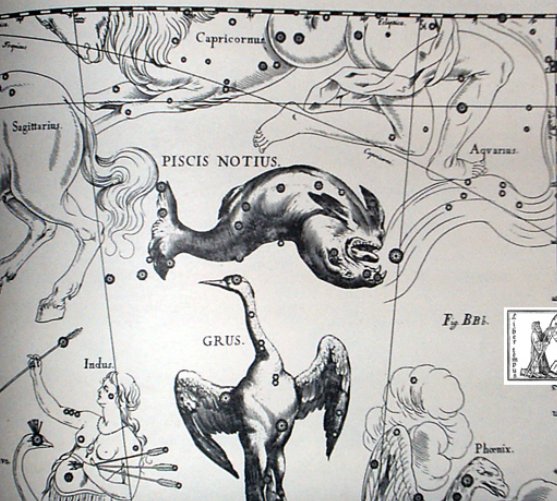 |
| CLOSE TO THE FULL MOON: |
| JUNE 26 (6 * 29½) |
27 |
28 |
29 (180) |
SIRIUS |
 |
 |
 |
 |
 |
| Ga4-14 (→ 41.4) |
Ga4-15 |
Ga4-16 |
Ga4-17 (100) |
Ga4-18 |
| *161 |
η CARINAE |
*163 |
*346 - *182 |
ALKES |
| "July 19 (200) |
20 |
He Anakena 21 |
22 (22 / 7) |
23 |
|
Delta |
δ Andromedae |
8.4 |
March 29 (88) |
0 |
|
|
|
η Phoenicis |
9.4 |
March 30 (89) |
1 |
|
|
0 |
Zero |
η Andromedae |
11.4 |
April 1 (91) |
3 |
|
|
Whip |
Cih (γ Cassiopeiai) |
12.4 |
April 2 (92) |
4 |
|
|
1 |
Al Sharatain |
Pair of Signs |
β Arietis (Sheratan), γ (Mesarthim) |
27.4 |
April 17 (107) |
19 |
|
|
Musca Borealis |
35 (Head of the Fly), 39 (Kaffaljidhma), and 41 Arietis (Bharani) |
41.4 |
May 1 (121) |
33 |
0 |
|
2 |
Al Dabarān |
Follower |
α Tauri (Aldebaran), θ¹, θ²´, γ (Hyadum I), δ (Hyadum II), ε (Ain) |
63.4 |
May 23 (143) |
55 |
22 |
|
3 |
Al Hak'ah |
White Spot |
λ Orionis (Heka), φ¹, φ² |
83.4 |
June 12 (163) |
75 |
42 |
|
4 |
Al Han'ah |
Brand |
γ Gemini (Alhena), μ (Tejat Posterior), ν, η (Tejat Prior), ξ (Alzirr) |
93.4 |
June 22 (173) |
85 |
52 |
|
5 |
Al Dhirā' |
Forearm |
α Gemini (Castor), β (Pollux) |
113.4 |
July 12 (193) |
105 |
72 |
|
6 |
Al Nathrah |
Gap |
ε Cancri (Beehive) |
130.4 |
July 29 (210) |
123 |
90 |
|
7 |
Al Tarf |
End |
ξ Cancri, λ Leonis (Alterf) |
143.4 |
Aug 11 (223) |
135 |
102 |
|
8 |
Al Jabhah |
Forehead |
η Leonis (Al Jabhah), α (Regulus), ζ (Adhafera), γ (Algieba) |
152.4 |
Aug 20 (232) |
144 |
111 |
|
9 |
Al Zubrah |
Mane |
δ Leonis (Zosma), θ (Coxa) |
169.4 |
Sept 6 (249) |
161 |
128 |
|
10 |
Al Sarfah |
Turn |
β Leonis (Denebola) |
178.3 |
Sept 15 (258) |
170 |
|
|
11 |
Al Áwwā' |
Barker |
β (Alaraph), η (Zaniah), γ (Porrima), δ (Minelauva), ε Virginis (Vindemiatrix) |
191.5 |
Sept 28 (271) |
183 |
|
|
Neither were there any signs of henua in line Ga2.
... He [Eric Thompson] established that one sign, very common in the [Mayan] codices where it appears affixed to main signs, can be read as 'te' or 'che', 'tree' or 'wood', and as a numerical classifier in counts of periods of time, such as years, months, or days. In Yucatec, you cannot for instance say 'ox haab' for 'three years', but must say 'ox-te haab', 'three-te years'. In modern dictionaries 'te' also means 'tree', and this other meaning for the sign was confirmed when Thompson found it in compounds accompanying pictures of trees in the Dresden Codex ...
... From the natives of South Island [of New Zealand] White [John] heard a quaint myth which concerns the calendar and its bearing on the sweet potato crop. Whare-patari, who is credited with introducing the year of twelve months into New Zealand, had a staff with twelve notches on it. He went on a visit to some people called Rua-roa (Long pit) who were famous round about for their extensive knowledge. They inquired of Whare how many months the year had according to his reckoning. He showed them the staff with its twelve notches, one for each month. They replied: 'We are in error since we have but ten months. Are we wrong in lifting our crop of kumara (sweet potato) in the eighth month?' Whare-patari answered: 'You are wrong. Leave them until the tenth month. Know you not that there are two odd feathers in a bird's tail? Likewise there are two odd months in the year.' The grateful tribe of Rua-roa adopted Whare's advice and found the sweet potato crop greatly improved as the result. We are not told what new ideas he acquired from these people of great learning in exchange for his valuable advice. The Maori further accounted for the twelve months by calling attention to the fact that there are twelve feathers in the tail of the huia bird and twelve in the choker or bunch of white feathers which adorns the neck of the parson bird ...
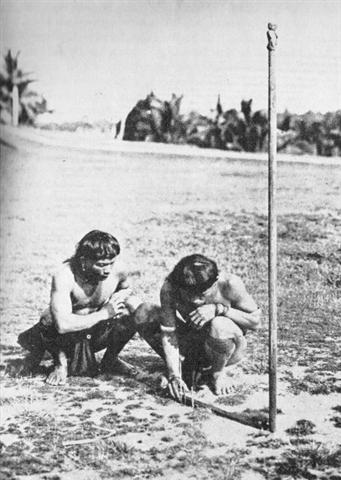
| MARCH 24 |
28 |
30 |
31 |
APRIL 13 |
17 (107) |
18 |
| SEPT 23 |
27 |
29 |
30 |
OCT 13 |
17 (290) |
18 |
 |
 |
 |
 |
 |
 |
 |
| Ga1-3 |
Ga1-7 |
Ga1-9 |
Ga1-10 |
Ga1-23 |
Ga1-27 |
Ga1-28 |
| Ga2 |
 |
 |
 |
 |
 |
 |
 |
| Ga3-2 (61) |
Ga3-5 |
Ga3-9 |
Ga3-16 |
Ga3-19 |
Ga3-21 |
Ga3-24 |
 |
 |
 |
 |
 |
 |
 |
| Ga4-3 |
Ga4-4 |
Ga4-6 |
Ga4-8 |
Ga4-10 |
Ga4-12 |
Ga4-13 |
 |
 |
 |
 |
 |
| Ga4-15 |
Ga4-19 |
Ga4-22 |
Ga4-25 |
Ga4-27 |
 |
 |
 |
 |
 |
 |
 |
| Ga5-2 |
Ga5-3 |
Ga5-5 |
Ga5-9 |
Ga5-16 |
Ga5-18 |
Ga5-20 |
 |
 |
 |
 |
 |
| Ga5-21 |
Ga5-23 |
Ga5-26 |
Ga5-29 |
Ga5-30 |
 |
 |
 |
 |
 |
 |
 |
| Ga6-1 |
Ga6-2 |
Ga6-4 |
Ga6-7 |
Ga6-8 |
Ga6-11 |
Ga6-13 |
 |
 |
 |
 |
 |
 |
 |
| Ga6-16 |
Ga6-18 |
Ga6-20 |
Ga6-23 |
Ga6-24 |
Ga6-26 |
Ga6-29 |
 |
 |
 |
 |
| Ga7-4 |
Ga7-10 |
Ga7-13 |
Ga7-17 |
 |
 |
 |
| Ga8-8 |
Ga8-11 |
Ga8-25 |
 |
 |
| Gb1-8 |
Gb1-26 |
| DEC 2 |
4 |
6 |
7 (341) |
21 SOLSTICE |
 |
 |
 |
 |
 |
| Gb2-1 (256) |
Gb2-3 (29) |
Gb2-5 (260) |
Gb2-6 |
Gb2-20 (275 = 61 + 214) |
| DRAMASA (*320) |
*322 |
*324 |
SADALSUD (*325) |
*339 |
| "Dec 25 (359) |
27 |
29 |
30 (341 + 23) |
"Jan 13 (378 = 355 + 23) |
| Gb3 |
 |
 |
 |
| Gb4-3 |
Gb4-13 |
Gb4-14 |
 |
 |
 |
 |
| Gb5-2 |
Gb5-3 |
Gb5-17 |
Gb5-22 |
 |
 |
 |
| Gb6-20 |
Gb6-27 |
Gb6-28 |
 |
 |
| Gb7-6 |
Gb7-24 |
 |
 |
 |
| Gb8-2 |
Gb8-13 |
Gb8-20 |
Moreover, side a of the tablet carried far more henua signs than side b.
| a1 |
a2 |
a3 |
a4 |
a5 |
a6 |
a7 |
a8 |
sum |
| 7 |
- |
7 |
19 |
12 |
14 |
4 |
3 |
66 = 63 + 3 |
| b1 |
b2 |
b3 |
b4 |
b5 |
b6 |
b7 |
b8 |
sum |
| 2 |
5 |
- |
3 |
4 |
3 |
2 |
3 |
22 = 25 - 3 |
... Several Asian cultures, including that of the Andaman Islands, believe that humanity emerged from a bamboo stem. In the Philippine creation myth, legend tells that the first man and the first woman were split open from a bamboo stem that emerged on an island created after the battle of the elemental forces (Sky and Ocean). In Malaysian legends a similar story includes a man who dreams of a beautiful woman while sleeping under a bamboo plant; he wakes up and breaks the bamboo stem, discovering the woman inside. The Japanese folktale 'Tale of the Bamboo Cutter' (Taketori Monogatari) tells of a princess from the Moon emerging from a shining bamboo section. Hawaiian bamboo ('ohe) is a kinolau or body form of the Polynesian creator god Kane. An ancient Vietnamese legend tells of a poor, young farmer who fell in love with his landlord's beautiful daughter. The farmer asked the landlord for his daughter's hand in marriage, but the proud landlord would not allow her to be bound in marriage to a poor farmer. The landlord decided to foil the marriage with an impossible deal; the farmer must bring him a 'bamboo tree of one-hundred sections'. The benevolent god Bụt appeared to the farmer and told him that such a tree could be made from one-hundred sections from several different trees. Bụt gave the him four magic words to attach the many sections of bamboo: 'Khắc nhập, khắc xuất', which means 'put in immediately, take out immediately'. The triumphant farmer returned to the landlord and demanded his daughter. The story ends with the happy marriage of the farmer and the landlord's daughter ...
| Toko. The higher-ranked of the two largest political units on Rapa Nui was the Ko Tu'u Aro Ko Te Mata Nui. This literally translates as The Mast/Pillar/Post [standing] Before the Greater Tribes. Toko te rangi, or Sky Propper, is named by Métraux in his corrected Miru genealogy as the thirteenth king of Easter Island and as one of the lineages or subgroups of the Miru. Although we have no record of the Sky Propper legend on Rapa Nui, other Polynesian legends of the Sky Propper are widely known, and they are formative elements in the basic cosmogenic theory of Polynesian belief. Sky (rangi) and Earth (papa) lay in primal embrace, and in the cramped, dark space between them procreated and gave birth to the gods such as Tane, Rongo and Tu. Just as children fought sleep in the stifling darkness of a hare paenga, the gods grew restless between their parents and longed for light and air. The herculean achievement of forcing Sky to separate from Earth was variously performed by Tane in New Zealand and the Society Islands, by Tonofiti in the Marquesas and by Ru (Tu) in Cook Islands. After the sky was raised high above the earth, props or poles were erected between them and light entered, dispelling the darkness and bringing renewed life. One detail which is iconographically of interest is whether the god responsible for separating Earth and Sky did so by raising the Sky with his upraised arms and hands, as in Tahiti and elsewhere, or with his feet as in New Zealand. The actual props, pillars or posts which separated the sky and earth are called toko in New Zealand, to'o in the Marquesas Islands and pou in Tahiti. In Rapanui tuu and pou are known, with pou meaning column, pillar or post of either stone or wood. Sometimes the word is applied to a natural rock formation with postlike qualities which serves as an orientation point. The star Sirius is called Te Pou in Rapanui and functions in the same way. One monolithic basalt statue is called Pou Hakanononga, a somewhat obscure and probably late name thought to mean that the statue served to mark an offshore tuna fishing site. The Rapanui word tokotoko means pole or staff. Sacred ceremonial staves, such as the ua on Rapa Nui, were called toko in Polynesia. Based upon the fact that toko in New Zealand also means 'rays of light', it has been suggested that the original props which separated and held apart Sky and Earth were conceived of as shafts of dawn sunlight. In most Polynesian languages the human and animate classifier is toko-, suggesting a congruence of semantic and symbolic meaning between anthropomorphic form and pole or post. Tane as First Man and the embodiment of sunlight thus becomes, in the form of a carved human male figure, the probable inspiration for the moai as sacred prop between Sky and Earth. The moai as Sky Propper would have elevated Sky and held it separate from Earth, balancing it only upon his sacred head. This action allowed the light to enter the world and made the land fertile. Increasing the height of the statues, as the Rapa Nui clearly did over time, would symbolically increase the space between Sky and Earth, ensuring increased fertility and the greater production of food. The proliferating image, consciously or unconsciously, must have visually (and reassuringly) filled the dangerously empty horizon between sea and land, just as the trees they were so inexorably felling once had. (Van Tilburg)
Tokotoko, stick, cane, crutches, axe helve, roller, pole, staff. P Pau.: tokotoko, walking stick. Mgv.: toko, a pole, stilts, staff. Mq.: tokotoko, toótoó, stick, cane, staff. Ta.: too, id. Churchill. |
Land (henua) seems to have arrived at Ga3-2 (61) and ended at Gb2-20 (275):
 |
214 |
 |
| Ga3-2 (61) |
Gb2-20 (275) |
| 216 (= 3 * 72) |
With 472 (= 16 * 29½) glyph positions in the text this leaves us with 472 - 216 = 256 (= 4 * 64) days for the rest of the cycle. And 256 - 216 = 40, which suggests there could have been 40 dark nights beyond Gb2-20.
| CLOSE TO THE SUN: |
38 |
CLOSE TO THE SUN: |
| 12-5 (84 + 255) |
12-6 (340) |
1-14 → 13-14 |
1-15 (380) |
1-16 |
| DEC 20 (84 + 270) |
SOLSTICE |
JAN 29 (*314) |
30 |
31 (396) |
 |
 |
 |
 |
 |
| Gb2-19 (45) |
Gb2-20 (275) |
Gb3-24 (314) |
Gb3-25 (275 + 40) |
Gb3-26 (87) |
| Al Sa'ad al Ahbiyah-23 (Lucky Star of Hidden Things) / Shatabisha-25 (Comprising a Hundred Physicians) ε Oct. (338.1), ρ Aquarii (338.2), 2/365 Lac. (338.5), SADACHBIA = γ Aquarii (338.6), π Gruis (338.9) |
β/172 Lac. (339.2), 4/1100 Lac. (339.4), π Aquarii (339.5) CASTOR (α Gemini)
|
φ4 Ceti (13.2) |
no star listed (14) |
1h (15.2) β Phoenicis (15.1), υ Phoenicis, ι Tucanae (15.6), η Ceti, ζ Phoenicis (15.7) |
| Febr 22 (418) |
Terminalia |
April 3 (*378) |
4 |
5 (460) |
| °Febr 18 (414) |
19 (50) |
°March 30 (*374) |
31 (455) |
°April 1 (91) |
| 'Jan 26 |
27 (392) |
'March 7 (*351) |
8 |
9 (68) |
| "Jan 12 (377) |
Tua Haro 13 (115 + 183) |
"Febr 21 |
Tehetu'upú 22 (*348) |
Terminalia (54) |
| CLOSE TO THE FULL MOON: |
CLOSE TO THE FULL MOON: |
| 6-5 (156) |
6-6 |
7-15 (196 = 156 + 40) |
7-16 |
7-17 |
| JUNE 20 (171) |
SOLSTICE |
JULY 30 (211) |
31 (*132) |
AUG 1 |
| ALGIEBA (The Mane) = γ Leonis, q CARINAE (155.5) |
TANIA AUSTRALIS (Southern Gazelle) = μ Ursae Majoris (156.0), GHOST OF JUPITER = NGC3242 Hydrae (156.8) |
MINELAUVA = δ Virginis (195.1), COR CAROLI = α Canum Ven. (195.3) |
δ Muscae (196.5), VINDEMIATRIX (Grape Gatherer) = ε Virginis (196.8) |
13h (197.8) ξ¹ Centauri (197.1), ξ² Centauri (197.9) |
| Aug 23 |
24 (236 = 472 / 2) |
Oct 2 |
3 (*196) |
4 (277) |
| °Aug 19 |
20 (232) |
°Sept 28 |
29 (*192) |
30 (273) |
| 'July 27 (208) |
28 |
'Sept 5 (248) |
6 (*169) |
7 |
| "July 13 (194) |
He Anakena 14 (*115) |
"Aug 22 (*154) |
23 |
Hora Iti 24 (236) |
 |
 |
 |
 |
 |
| Ga4-8 (91) |
Ga4-9 |
Ga5-21 |
Ga5-22 (132) |
Ga5-23 |
However, counted from the Sun at Sadachbia to Vindemiatrix at the Full Moon there were 41 days:

|




.jpg)


























































